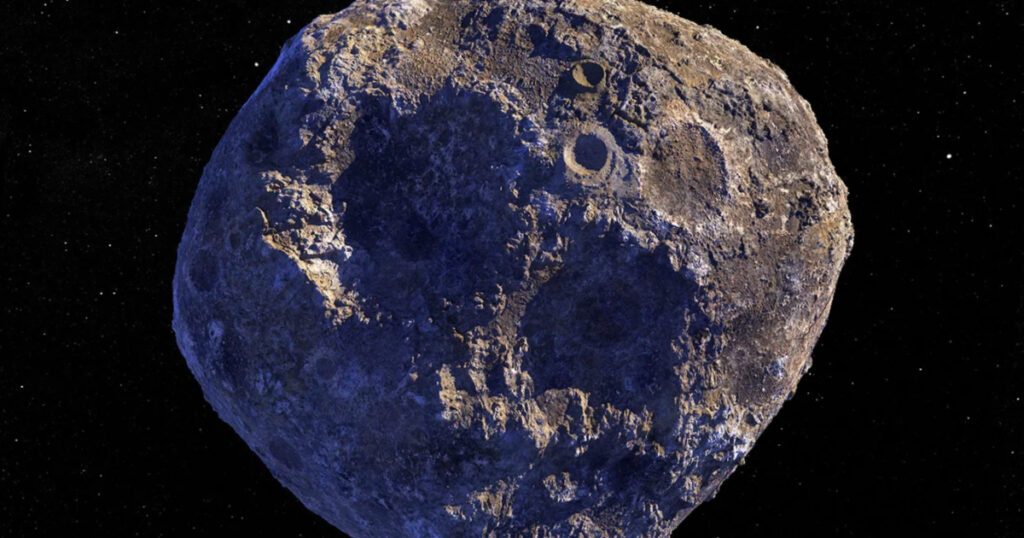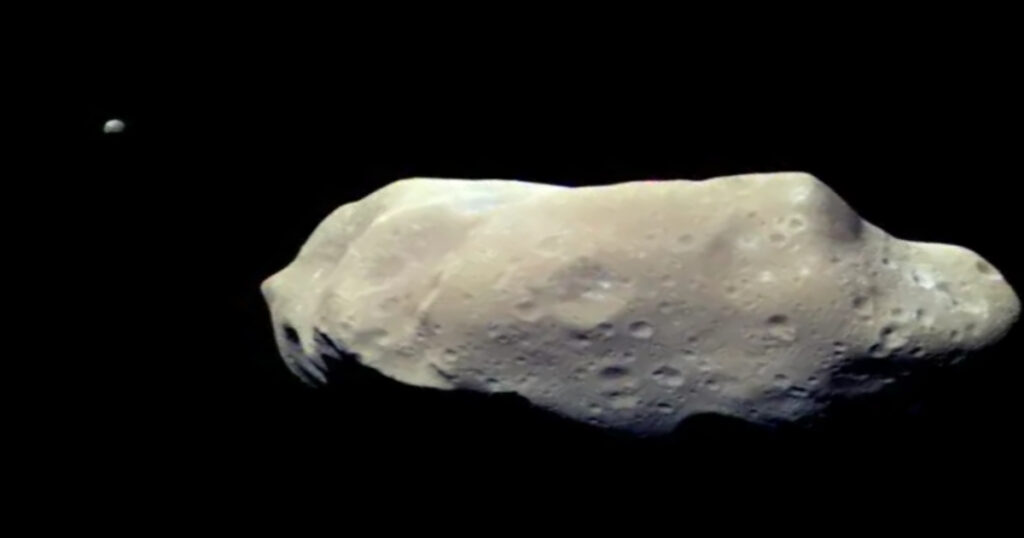Asteroids are rocky, airless remnants left over from the formation of our solar system about 4.6 billion years ago. They are often referred to as minor planets but lack the defining features of a true planet.

What is the Location of Asteroids?
Most asteroids reside within the asteroid belt, a vast region between Mars and Jupiter. However, some wander closer to the Sun, occasionally crossing Earth‘s orbital path and becoming a potential threat.
What are the Sizes and Shapes of Asteroids?
Asteroids range dramatically in size, from behemoths like Vesta, measuring about 530 kilometers (329 miles) in diameter, to pebbles just a few meters across. Their shapes are equally diverse, with some being roughly spherical and others quite irregular.
What is the Composition of Asteroids?
Primarily composed of rock and metal, the specific mix can vary. Some asteroids are thought to be rich in iron and nickel, while others contain more carbonaceous materials like organic compounds.
What are the types of Asteroids?
Scientists categorize them based on their composition and spectral properties, which offer clues about their origin and formation history. Here’s a breakdown of the major types:
C-type Asteroids (Carbonaceous):
C-type Asteroids are the most abundant type, accounting for roughly 75% of known asteroids. They are composed primarily of carbonaceous materials like organic compounds, along with silicate minerals.
They are believed to be relatively unchanged since the solar system’s formation, offering a glimpse into its early composition. They are often dark and irregularly shaped.
S-type Asteroids (Stony):
S-type Asteroids are the most common type, making up around 17% of known asteroids. They are composed mainly of silicate minerals and some nickel-iron metals. They are thought to originate from the mantles of differentiated asteroids that collided and broke apart. They are generally brighter and more reflective than C-type asteroids.
M-type Asteroids (Metallic):
M-type Asteroids are less common, constituting about 6% of known asteroids. They are composed primarily of nickel-iron metals, similar to the cores of planets.
They are believed to be the remnants of the cores of shattered asteroids or collisions that stripped away their rocky mantles. They are relatively rare and often found scattered throughout the solar system, not concentrated in the asteroid belt.
Other Types:
In addition to these main categories, there are less common types like:
X-type asteroids: Contain a mix of characteristics from C, S, and M types.
V-type asteroids: Thought to be a transitional type between C and S types.
Metallic asteroids with high iron content: A subgroup of M-type asteroids with a particularly high abundance of iron.

Examples of Asteroids:
Vesta Asteroid:
This S-type asteroid is believed to be the remnant of the crust and mantle of a much larger body that shattered long ago. The Dawn mission captured stunning images of its surface features, including a large equatorial bulge and a prominent impact crater.
Bennu Asteroid:
This Near-Earth Object (NEO) captured significant attention due to the successful OSIRIS-REx mission. Bennu is a carbonaceous asteroid (C-type) and a potential source of valuable resources like water ice and organic materials. The mission successfully collected samples from its surface, which are currently being studied by scientists.
Ryugu Asteroid:
Another target of a sample return mission (Hayabusa2), Ryugu is a C-type asteroid with a fascinating, top-shaped form. Studies of its composition suggest it may have played a role in delivering water and organic materials to early Earth.
Psyche Asteroid:
This metallic asteroid (M-type) also known as Psyche 16 is a unique oddity. Unlike most asteroids composed primarily of rock, Psyche is thought to be the exposed core of a shattered protoplanet, loaded with treasures like gold, iron, and nickel.
The Psyche mission, which was scheduled for launch in 2023, aimed to study this metallic world and provide insights into the cores of planets.
Apophis Asteroid:
This infamous NEO gained notoriety due to concerns about a potential Earth impact in 2029 (later ruled out). Apophis is a relatively large asteroid (estimated diameter of about 370 meters) and a reminder of the importance of monitoring NEOs for potential future hazards.
Oumuamua (1I/2017 U1):
This interstellar visitor captured the world’s attention in 2017 when it became the first object definitively identified as originating from outside our solar system. Its unusual elongated shape and unexpected trajectory sparked debate about its nature, with some theories suggesting it could be an artificial object.
While its exact origins and composition remain a mystery, ʻOumuamua provided valuable insights into the existence of objects from other star systems. Scientists still debate whether Oumuamua was an Asteroid or a Comet.

Formation of Asteroids:
The prevailing theory suggests that asteroids are leftover debris from the protoplanetary disk, the swirling cloud of gas and dust that birthed our solar system. Collisions and gravitational interactions within this disk likely prevented them from coalescing into full-fledged planets.
Exploration of Asteroids:
Spacecraft missions like Dawn and Lucy have ventured out to study these celestial bodies in detail, providing valuable insights into their composition, structure, and potential role in the evolution of our solar system.
Are Asteroids Potential Threats to the Earth?
While most asteroids pose no immediate threat, some Near-Earth Objects (NEOs) have orbits that bring them worryingly close to Earth. Tracking and monitoring these objects is crucial for planetary defense efforts. Asteroids are also considered potential resources for the future, with some containing valuable metals and minerals.
How frequently do Asteroids strike the Earth?
About once per century, an asteroid big enough to destroy land strikes Earth. The frequency of impacts decreases with increasing asteroid size.
Desk-sized asteroids, on the tiny end of the spectrum, strike Earth around once per month, nevertheless, they just explode into brilliant fireballs as they burn up in the atmosphere. The strikes become fewer and further between asteroids of increasing size.
What’s the difference between Comets, Meteorites, and Asteroids?
The tiny, stony, dusty objects orbiting the sun are called Asteroids.
The fragments of an asteroid that fall to Earth after rupturing in the atmosphere are known as Meteorites.
Since most asteroids are weak, a meteorite shower is frequently produced on Earth when they break apart in the atmosphere.
Comets are tiny things that circle the sun as well, but they also include ice, which when it gets close to the sun heats up and forms an atmosphere and tail of gas and dust.
Can we change the direction of the Asteroids coming towards the Earth?
“Using a concept known as a Kinetic Impactor, NASA was able to gently alter the track of a tiny asteroid in the Double Asteroid Redirection Test (DART) mission,” Chodas said. By crashing into the target, a spaceship using this method slightly alters its velocity.
A spacecraft like DART might be used to deflect an asteroid that is traveling towards Earth such that it would avoid the Earth many years later, provided that we have many years to warn of the danger of impact and the asteroid is not too huge.”
Difference between Asteroids and Moons:
Asteroids Vs. Moons:
| Feature | Asteroids | Moons |
|---|---|---|
| Definition | Rocky or metallic remnants leftover from the formation of the solar system | Natural satellites orbiting planets or dwarf planets |
| Orbit | Primarily reside in the asteroid belt between Mars and Jupiter, but some have more eccentric orbits | Circular or elliptical orbits around their host planet or dwarf planet |
| Size | Range in size, from giant asteroids like Ceres (dwarf planet) to smaller pebbles | Range in size, from tiny dust particles to larger than some planets (e.g., Ganymede, Titan) |
| Composition | Primarily rock and metal, with some variations in composition | Varied; Rock, ice, metal, depending on formation process |
| Atmosphere | No atmosphere | Some moons have thin atmospheres (e.g., Titan), most have none |
| Surface Features | Can have craters, some evidence of surface features on larger asteroids | Can have craters, volcanoes, canyons, icy plains depending on composition and internal heat |
| Magnetic Field | No magnetic field | Only a few large moons have weak magnetic fields (e.g., Ganymede) |
| Formation | Formed during the solar system’s birth from the leftover rocky and metallic debris that didn’t accrete into planets | Formed around planets or dwarf planets through various theories, including capture from passing objects, formation from debris along with the host celestial body, or collision events |
| Number in our Solar System | Millions of known asteroids | Hundreds of moons orbiting planets and dwarf planets |
Conclusion:
Asteroids, rocky leftovers from our solar system’s birth, come in surprising varieties. From resource-rich carbonaceous types to metallic remnants of shattered worlds, they offer a glimpse into our past. Ongoing exploration unlocks their secrets, aiding our understanding of planet formation and potential future resources.
